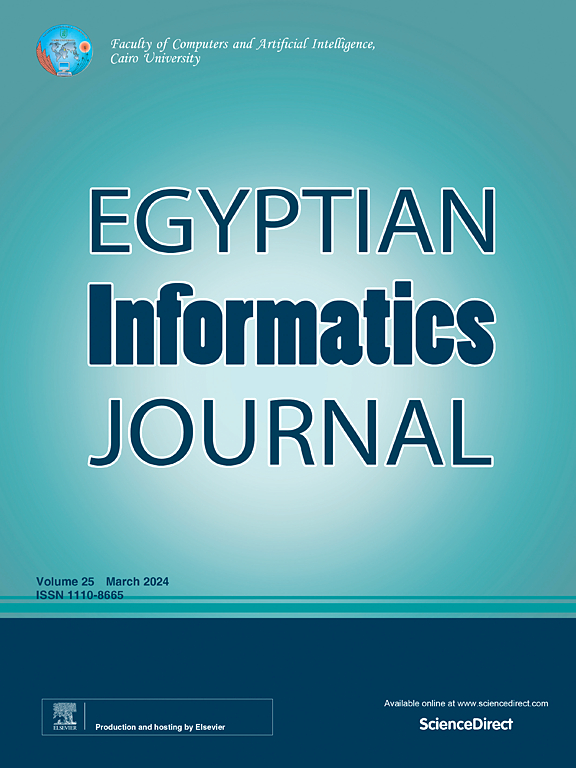Anomaly detection in graph databases using graph neural networks: Identifying unusual patterns in graphs
IF 4.3
3区 计算机科学
Q1 COMPUTER SCIENCE, ARTIFICIAL INTELLIGENCE
引用次数: 0
Abstract
Anomaly detection in graph-structured data is a critical task in various applications, including social networks, fraud detection, and educational platforms. This paper introduces a novel hybrid architecture that leverages Graph Convolutional Networks (GCN), Graph Attention Networks (GAT), and Graph Autoencoders (GAEs) to detect anomalies across nodes, edges, and subgraphs. The proposed model combines the strengths of GCNs for extracting local structural features, GATs for adaptive attention-based neighborhood aggregation, and GAEs for unsupervised graph reconstruction. By integrating these components, our approach generates robust embeddings that are used to calculate anomaly scores based on reconstruction errors, density estimation, and embedding distances. These scores are then aggregated using a weighted hybrid function, enabling adaptive and flexible anomaly scoring. Experimental results on benchmark datasets demonstrate that the hybrid model significantly improves the detection of anomalous nodes, edges, and subgraphs compared to existing methods. This work provides a scalable and effective framework for anomaly detection in graphs, offering insights into the interpretability and adaptability of GNN-based anomaly scoring functions.
使用图神经网络的图数据库异常检测:识别图中的异常模式
图结构数据中的异常检测是各种应用的关键任务,包括社交网络、欺诈检测和教育平台。本文介绍了一种新的混合架构,它利用图卷积网络(GCN)、图注意网络(GAT)和图自动编码器(GAEs)来检测节点、边和子图之间的异常。该模型结合了GCNs提取局部结构特征的优势,GATs用于自适应基于注意力的邻域聚集,GAEs用于无监督图重建。通过整合这些组件,我们的方法生成鲁棒嵌入,用于基于重建误差、密度估计和嵌入距离计算异常分数。然后使用加权混合函数对这些分数进行汇总,从而实现自适应和灵活的异常评分。在基准数据集上的实验结果表明,与现有方法相比,混合模型显著提高了异常节点、边缘和子图的检测能力。这项工作为图中的异常检测提供了一个可扩展和有效的框架,为基于gnn的异常评分函数的可解释性和适应性提供了见解。
本文章由计算机程序翻译,如有差异,请以英文原文为准。
求助全文
约1分钟内获得全文
求助全文
来源期刊

Egyptian Informatics Journal
Decision Sciences-Management Science and Operations Research
CiteScore
11.10
自引率
1.90%
发文量
59
审稿时长
110 days
期刊介绍:
The Egyptian Informatics Journal is published by the Faculty of Computers and Artificial Intelligence, Cairo University. This Journal provides a forum for the state-of-the-art research and development in the fields of computing, including computer sciences, information technologies, information systems, operations research and decision support. Innovative and not-previously-published work in subjects covered by the Journal is encouraged to be submitted, whether from academic, research or commercial sources.
 求助内容:
求助内容: 应助结果提醒方式:
应助结果提醒方式:


